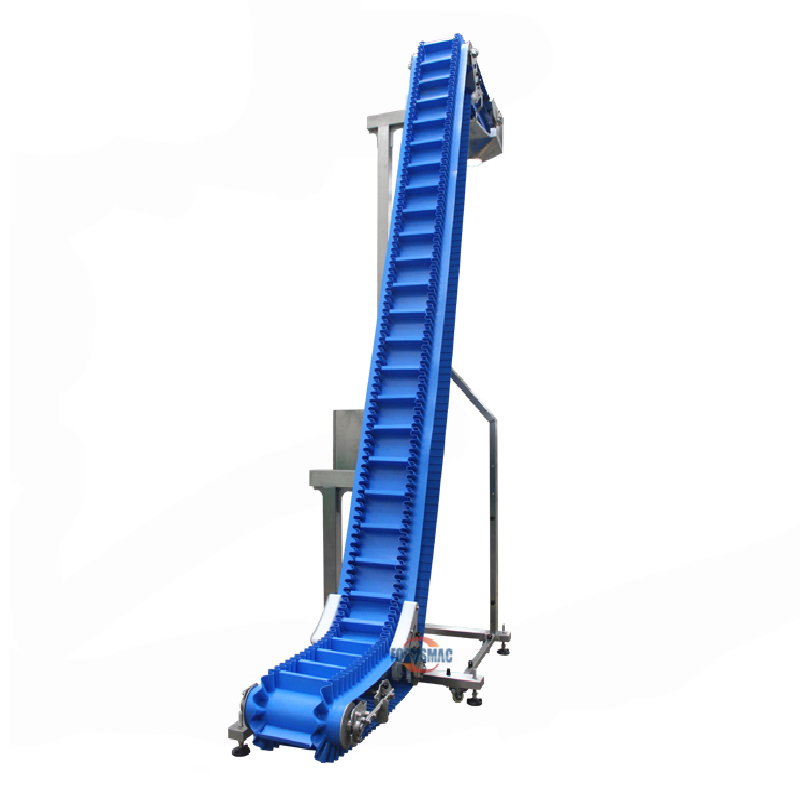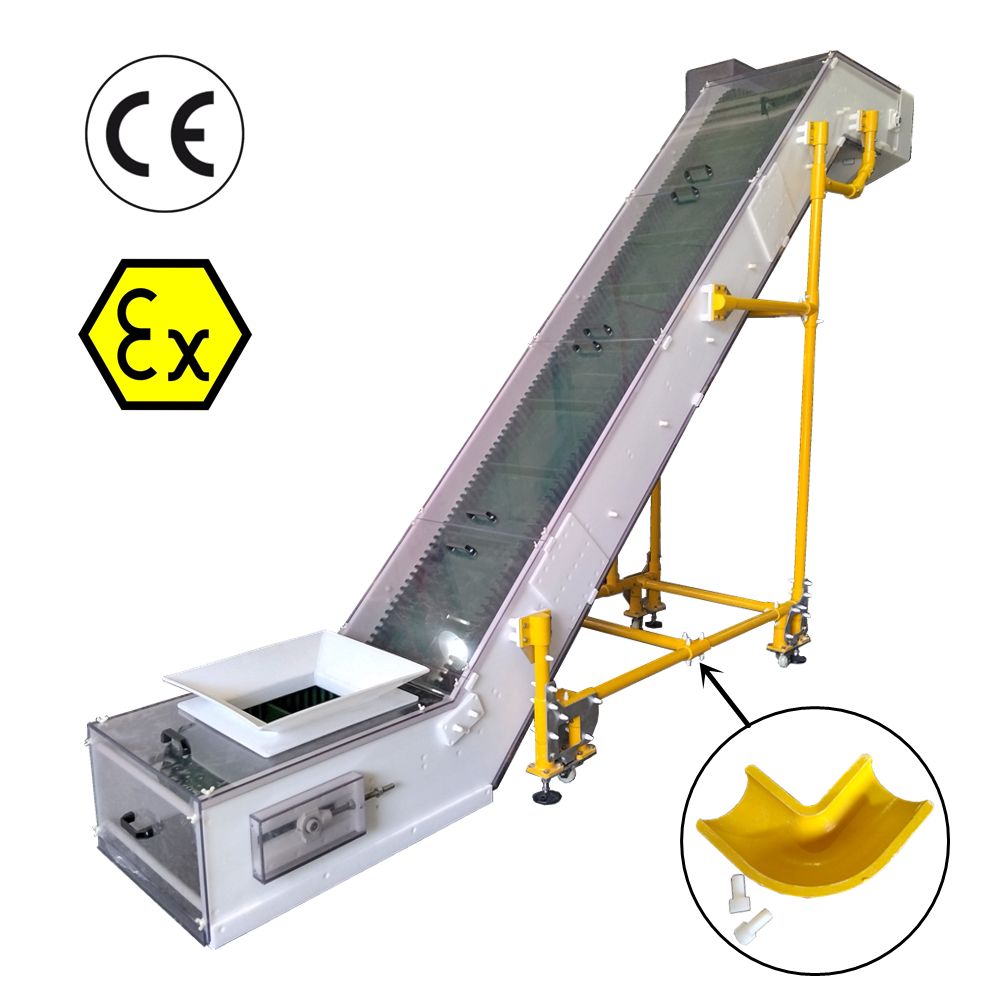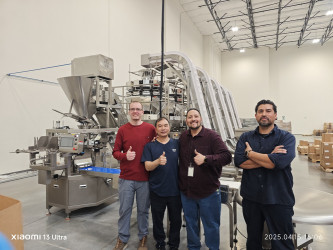Choosing the Right Inclined Belt Conveyor for Your Business
An inclined belt conveyor is a type of industrial conveyor that moves materials at an angle. It is commonly used in material handling applications where the material needs to be transported from one level to another. In this guide, we will explore the different types of inclined belt conveyors, the factors to consider when selecting one, the benefits of using one, maintenance tips, and safety measures.
Medium inclined conveyor: This type of conveyor has an angle of inclination between 20 to 45 degrees. It is used to transport materials at a moderate angle.
Low inclined conveyor: This type of conveyor has an angle of inclination less than 20 degrees. It is used to transport materials at a gentle angle.
Z-shaped inclined conveyor: This type of conveyor has a zigzag pattern that allows materials to be transported at different angles.
The angle of inclination: The angle of inclination of the conveyor should be chosen based on the properties of the material being transported. Steeper angles are suitable for heavier and larger materials, while lighter materials can be transported at shallower angles.
Load capacity: The conveyor's load capacity should be able to handle the weight of the materials being transported.
Conveyor belt speed: The speed of the conveyor should be chosen based on the material flow rate and the distance it needs to travel.
Material type: The properties of the material being transported, such as its size, shape, and abrasiveness, should be taken into consideration when selecting the conveyor.
Environment conditions: The environmental conditions of the application area, such as temperature, humidity, and cleanliness, should be taken into account to ensure that the conveyor can withstand the conditions.
Reduced labor costs: Inclined belt conveyors can reduce the need for manual labor, saving time and money.
Improved material handling: Inclined belt conveyors can transport materials at a specific angle, allowing for more precise material handling.
Reduced material waste: Inclined belt conveyors can transport materials more gently and efficiently, reducing material waste and damage.
Regular cleaning and inspection: The conveyor should be cleaned regularly to remove debris and inspected for any signs of wear and tear.
Proper lubrication: The conveyor should be lubricated regularly to ensure that it operates smoothly and efficiently.
Regular belt tensioning: The belt tension should be checked regularly to ensure that it is at the proper tension level.
Replacement of worn-out components: Worn-out components, such as bearings and pulleys, should be replaced promptly to prevent damage to the conveyor.
Proper guarding: The conveyor should be properly guarded to prevent accidental contact with moving parts.
Emergency stop buttons: Emergency stop buttons should be installed at appropriate intervals along the conveyor to allow operators to stop the conveyor quickly in case of an emergency.
Regular training for operators: Operators should receive regular training on how to operate the conveyor safely.
Adherence to safety regulations: All safety regulations and guidelines should be followed to ensure that the conveyor operates safely.
Types of Inclined Belt Conveyors
Steep inclined conveyor: This type of conveyor has an angle of inclination greater than 45 degrees. It is used to transport materials at a steep angle.Medium inclined conveyor: This type of conveyor has an angle of inclination between 20 to 45 degrees. It is used to transport materials at a moderate angle.
Low inclined conveyor: This type of conveyor has an angle of inclination less than 20 degrees. It is used to transport materials at a gentle angle.
Z-shaped inclined conveyor: This type of conveyor has a zigzag pattern that allows materials to be transported at different angles.
Factors to Consider when Selecting an Inclined Belt Conveyor
When selecting an inclined belt conveyor, several factors should be considered to ensure that it meets your material handling needs. These factors include:The angle of inclination: The angle of inclination of the conveyor should be chosen based on the properties of the material being transported. Steeper angles are suitable for heavier and larger materials, while lighter materials can be transported at shallower angles.
Load capacity: The conveyor's load capacity should be able to handle the weight of the materials being transported.
Conveyor belt speed: The speed of the conveyor should be chosen based on the material flow rate and the distance it needs to travel.
Material type: The properties of the material being transported, such as its size, shape, and abrasiveness, should be taken into consideration when selecting the conveyor.
Environment conditions: The environmental conditions of the application area, such as temperature, humidity, and cleanliness, should be taken into account to ensure that the conveyor can withstand the conditions.
Benefits of Using an Inclined Belt Conveyor
Increased efficiency: Inclined belt conveyors can move materials more quickly and efficiently, reducing labor costs and improving productivity.Reduced labor costs: Inclined belt conveyors can reduce the need for manual labor, saving time and money.
Improved material handling: Inclined belt conveyors can transport materials at a specific angle, allowing for more precise material handling.
Reduced material waste: Inclined belt conveyors can transport materials more gently and efficiently, reducing material waste and damage.
Maintenance Tips for Inclined Belt Conveyor
To ensure that an inclined belt conveyor operates smoothly and efficiently, regular maintenance is essential. Here are some maintenance tips:Regular cleaning and inspection: The conveyor should be cleaned regularly to remove debris and inspected for any signs of wear and tear.
Proper lubrication: The conveyor should be lubricated regularly to ensure that it operates smoothly and efficiently.
Regular belt tensioning: The belt tension should be checked regularly to ensure that it is at the proper tension level.
Replacement of worn-out components: Worn-out components, such as bearings and pulleys, should be replaced promptly to prevent damage to the conveyor.
Safety Measures for Inclined Belt Conveyor
To ensure that an inclined belt conveyor operates safely, several safety measures should be implemented.Proper guarding: The conveyor should be properly guarded to prevent accidental contact with moving parts.
Emergency stop buttons: Emergency stop buttons should be installed at appropriate intervals along the conveyor to allow operators to stop the conveyor quickly in case of an emergency.
Regular training for operators: Operators should receive regular training on how to operate the conveyor safely.
Adherence to safety regulations: All safety regulations and guidelines should be followed to ensure that the conveyor operates safely.





